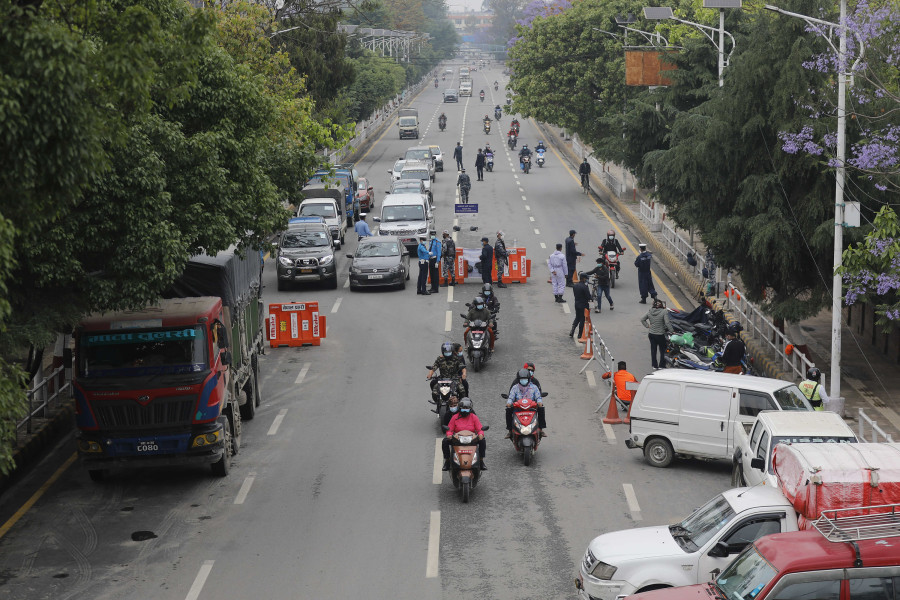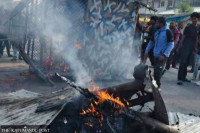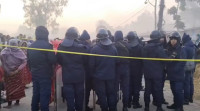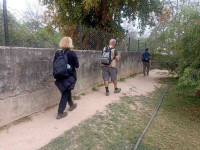National
Authorities appear clueless about how to ease or lift lockdown
Prohibitory orders currently in place in the Valley have been extended by a week and the rest of country follows the model. Little else is being done to check virus spread.
Arjun Poudel
For Nepali authorities, maintaining the status quo is the name of the game.
Even after 50 days of lockdown, which they have been calling “prohibitory orders”, imposed to curb the spread of the coronavirus, they are yet to devise any modality on how to loosen or lift it. Nor is there any planning yet.
On Sunday, Kathmandu Valley authorities announced that the ongoing lockdown would continue for one more week. By that time, the Valley will have been under lockdown for almost two months.
Some minor changes, however, have been made to the existing modality.
Chief district officers of Kathmandu Valley said on Sunday that shops selling essential supplies, as well as bookshops and stationery shops, would be allowed to open until 11am. Agricultural work also will be allowed besides movements of people on foot. Authorities have also decided to allow printing presses to operate till 11am, shops selling construction materials from 4pm onwards and online and takeaway services for home delivery of essential goods until 7pm.
“We have taken the decision after holding a series of meetings with all chief district officers of all the districts where prohibitory orders are in place. We have also held discussions with various stakeholders from health, tourism and industry ministries,” Janak Raj Dahal, spokesman for the Home Ministry, told the Post. “All the districts will follow the modality of the three districts of Kathmandu Valley with minor changes according to their needs.”
Experts, however, are sceptical. According to them, ad-hoc decisions are not going to work and a studied decision is a must.
“Lockdown is being used by the government as the one and only measure to control the spread of coronavirus infections,” Dr Krishna Man Shakya, vice-president of Nepal Public Health Association, told the Post. “It has become an easy means for authorities, even if it is a nightmare for the public.”
Studies have shown lockdown is a measure that provides an opportunity for the authorities to prepare against the pandemic by expanding testing, providing training for health workers, increasing hospital beds and arranging other necessary equipment like ventilators. A lockdown is meant to break the chain of infections so that authorities can set up more isolation and quarantine facilities and launch awareness drives, among others.
After ramping up tests following the sudden rise in coronavirus cases, the number of tests of late has come down. Many believe testing has decreased overall because the number of new infections has declined lately in the Valley.
Experts, however, say the growing concern now is that the virus has spread to rural areas.
“The infection rate has not declined, only the test numbers have,” said Shakya.
Test positivity rate still continues to remain stubbornly high.
On Sunday 7,517 tests were reported of which 1,694—or almost 23 percent—returned positive.
The Health Ministry reported 46 more Covid-19-related fatalities, taking the toll to 8,415. The number of active cases stands at 68,955.
Experts say little has been done from the public health perspective during the lockdown period so far.
Despite the pandemic being a public health issue, the Health Ministry does not seem to be leading the way. But ministry officials say it’s not just its duty when it comes to fighting the virus.
“It is not just the responsibility of the Health Ministry,” said Dr Krishna Prasad Paudel, spokesperson for the Health Ministry. “Many other agencies must work equally seriously to check the spread of infections.”
Paudel conceded that a lot of things, which could be done after enforcing the lockdown, were not done.
“We could not increase community testing and make contact tracing effective due to various reasons,” said Paudel.
The government introduced a Covid-19 Crisis Management Ordinance last month which provisions the formation of a Covid-19 Crisis Management Centre but it is headed by a retired lieutenant general and four of its seven members have the security services background.
It has one representative from the Ministry of Health and Population, although Balananda Sharma, coordinator of the Centre, told the Post that the problem is of public health.
“We cannot open everything immediately as that could increase the risk,” Sharma said. “An incremental relaxation of restrictions has been advised so that spread will be controlled while people won't suffer much.”
He said that as the long term solution is vaccines without which the virus could mutate, the foreign and health ministries are working to procure them. However, there has been little to show for their efforts. Just around two percent of the people have been vaccinated, most of them with vaccines given in grants by China, India and the COVAX facility led by the World Health Organization.
“No visible work has been done by the authorities to contain the spread of the infections,” said Shakya. “The focus of all three tiers of government seems to be on the treatment only.”
During the height of the second wave of the pandemic in the middle of last month, there were shortages of hospital beds, oxygen and equipment.
Officials say these supplies have been increased.
“The number of beds has been increased, and more ventilators and intensive care unit beds have been set up during the lockdown period,” said Paudel, the spokesperson.
But on the other hand, there is no sufficient manpower to operate ventilators and these equipment have remained unused in different parts of the country.
The government should rather focus on checking the spread of infections, according to epidemiologists.
“Instead of focusing on all those things like testing and isolating the infected, authorities are trying to contain the spread of infections by locking people inside their homes,” Dr Padam Bahadur Chand, an epidemiologist who served as chief of the Policy Planning and International Cooperation Division at the Health Ministry, told the Post.
With little more than lockdown as the means to check the spread of the virus, the consequences could be disastrous once the lockdown is lifted, experts say.
They say that authorities should have created a mechanism to monitor the movement of the infected people, upto the village level, ramp up testing, set up isolation and quarantine facilities, identify the green, yellow and red zones, address the basic needs of the people hit hard by the restrictions and provide relief materials.
“The chain of the infections, even if it is broken through the ongoing restrictions, will be joined, if they are lifted without preparations,” Dr Binjawala Shrestha, a public health expert who is also an assistant professor of Community Medicine at the Institute of Medicine, told the Post.
“What can we expect when chief district officers and businesspeople make decisions on lockdown without taking suggestions from experts in the related fields?”
Officials concede that infections could rise if restrictions are lifted.
“We are still aware that things could escalate if we reopen immediately so we will take further decisions according to the situation,” said Dahal of the Home Ministry. “If the number of cases continues to go down we will further ease the restrictions.”
Although the number of daily infections has been coming down since the high of 9,317 cases across the country on May 11 and was 4,831 on April 29 when the prohibitory orders were imposed in the Valley, it is unclear at what point the restrictions will be lifted.
Doctors say at least 10 people come in contact with infected people and suggest that authorities lift the restrictions completely only if they have a capacity to conduct contact tracing of at least 3,000 people a day in the Valley.
“Even if the authorities are not doing anything, cases could decline after a certain time,” Sushil Koirala, public health surveillance and research expert who has worked with the United Nations and international non-governmental organisations, told the Post.
While there are concerns that the cases could suddenly rise if the lockdown is lifted, the ongoing prohibitory orders are having a profound impact on the economy and the poor, especially those who have to earn daily for survival.
Sharma of the Covid-19 Crisis Management Centre agrees.
“The issue is people have to make a living,” Sharma told the Post.
For the authorities there are conflicting demands.
“The Health Ministry has been suggesting that restrictions should be in place but other ministries like industry and tourism have suggested restrictions should be relaxed soon,” said Dahal of the Home Ministry.
Given that there has been little progress on preventing the virus from spreading further, experts say that lockdown is the only measure authorities know although that is not the answer.
“It seems that authorities will again reinforce the lockdown if new cases start to go up,” Dr Sher Bahadur Pun, chief of Clinical Research Unit at the Sukraraj Tropical and Infectious Disease Hospital, told the Post. “Until we do substantial work to contain the spread of the virus, the infection will not stop.”
(Tika R Pradhan contributed reporting.)




 18.12°C Kathmandu
18.12°C Kathmandu













%20(1).jpg&w=300&height=200)

